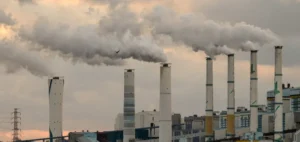The recent change of government in the UK is having an immediate impact on the country’s energy projects. The newly-elected Labour government has decided not to support the development of a new metallurgical coal mine in Cumbria, in the north-west of England. This decision marks a break with the policy of the previous Conservative majority.
Background to the Coal Mine Project
In 2022, the Conservative government authorized the launch of this underground mine project, the first of its kind in 30 years. This project, located in Whitehaven, had aroused strong opposition, notably from the environmental NGO Friends of the Earth, which had filed a legal complaint. The project aimed to extract coal for steel production, both in the UK and Europe, to replace imported coal.
The NGOs had lost their first legal battle over a year ago. However, a further hearing in London’s High Court is scheduled over three days, starting next Tuesday, to reassess the legality of the original decision.
Position of the Labour Government
The Labour government said it recognized “an error of law” in the initial authorization granted to the mine. Consequently, he will not defend this authorization in court. This position is in line with the Labour Party’s election pledge not to grant new coal licenses.
This decision also follows a recent ruling by the British Supreme Court. Last month, the court ruled that a drilling permit was illegal for failing to take into account the carbon emissions associated with the use of the oil extracted. This reinforces the current government’s approach to environmental and sustainable development issues.
Reactions and outlook
Reactions to this decision have been varied. Jamie Peters, an official of Friends of the Earth, expressed his satisfaction, saying: “We are delighted that the government recognizes that planning permission for this destructive, polluting and unnecessary coal mine was granted illegally”. The organization hopes that the High Court will follow this logic at the next hearing.
On the economic front, this decision could have repercussions for the British and European steel industry, which had been relying on this coal to reduce its dependence on imports. However, this approach could also accelerate the transition to cleaner, renewable energy sources, in line with national and European climate objectives.
Conclusion and future prospects
This decision by the Labour government is part of an overall context of energy transition and heightened environmental awareness. It illustrates the UK’s political shift towards a more sustainable, environmentally-friendly energy policy. The next steps will be crucial in determining the impact of this decision on the industrial sector and on the country’s energy policy.






















